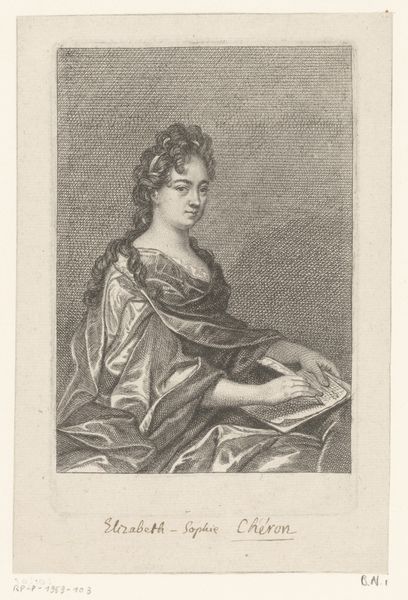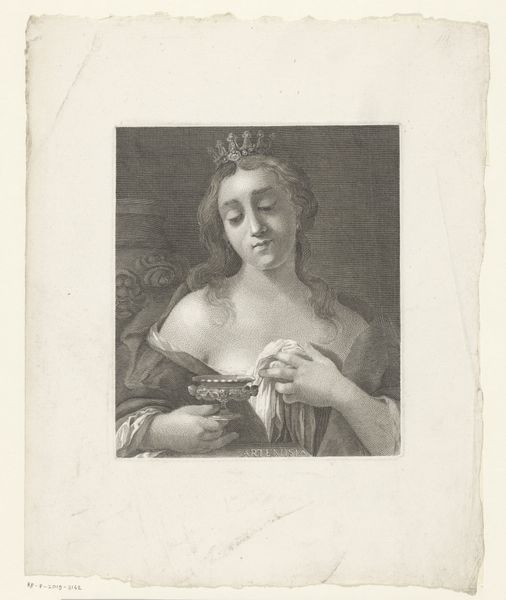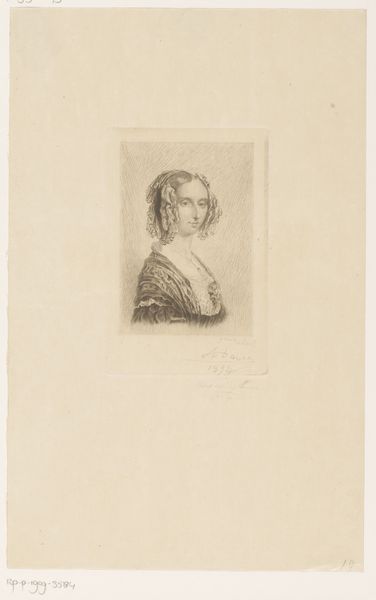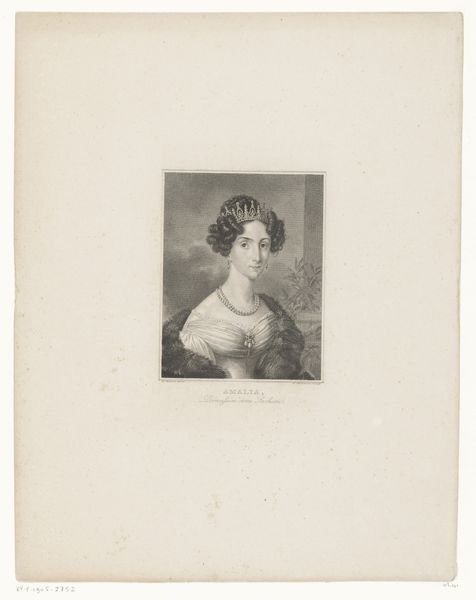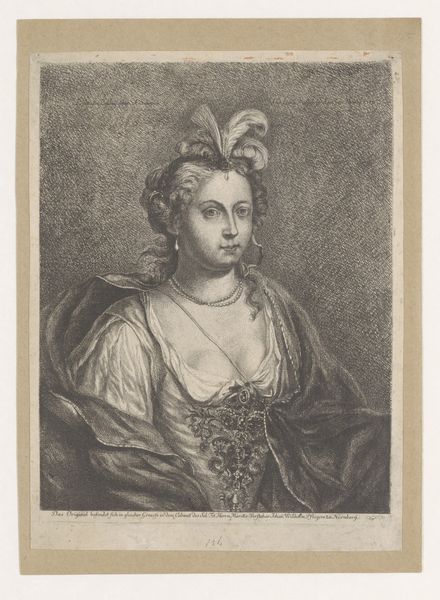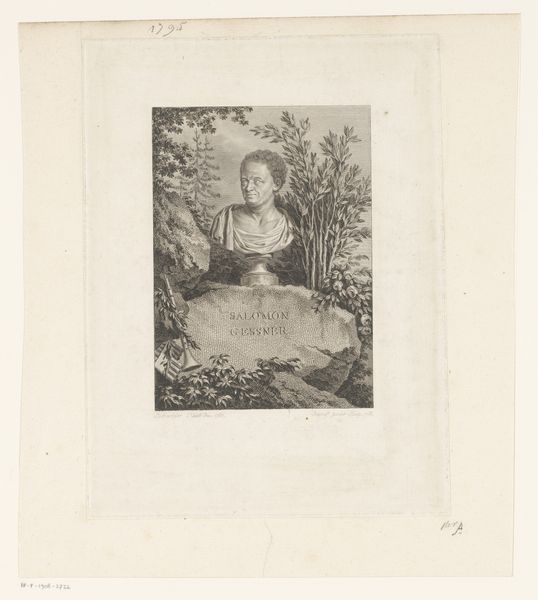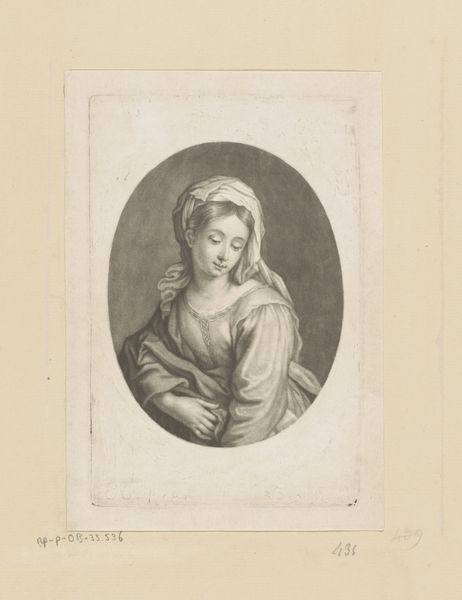
Dimensions: height 171 mm, width 118 mm
Copyright: Rijks Museum: Open Domain
Curator: Here we have "Portret van een onbekende zittende vrouw," or "Portrait of an Unknown Seated Woman," an engraving attributed to Franz Zastera, dating sometime between 1828 and 1880. Editor: She appears melancholic. The artist has given her a sideways glance, which hints at a certain coyness or reluctance to engage. Curator: The textures created by the engraving are quite remarkable, aren't they? You can see how Zastera built up layers of fine lines to describe the folds of her gown, the sheen of her shawl, the almost cloud-like arrangement of her hair. Editor: And notice the deliberate symbolism! The flower in her hair—probably a rose, denoting beauty and perhaps hidden passion. The landscape in the background, barely sketched in, represents longing and maybe lost opportunities. What stories does this image want to tell us? Curator: For me, it speaks volumes about the 19th-century printmaking industry. Engravings like this weren't necessarily about high art; they were about reproducing and circulating images widely. This could have been a portrait intended for the rising middle class. Consider the labor that went into such meticulous detail, all for mass production! Editor: Perhaps. But these images held a different power, I think. The very act of memorializing, even an unknown sitter, elevates her to a cultural icon of beauty and refinement. That idealized presentation had consequences, it shaped expectations. Curator: That's an interesting tension: the artwork itself aiming to make images more accessible but then reinforcing strict societal standards through idealized depictions. Did she even exist, or did the market push her into existence as the consumer desire coalesced? Editor: And it makes one wonder: who was she really? What did she think, feel? It’s tantalizing and troubling to think we only know her through this constructed image and that the memory has become entangled in those cultural projections. Curator: A mass produced likeness, forever capturing not necessarily *her* but an idealized conception from the era. Thank you for your reflections on the cultural memory and production this provokes, it’s very interesting. Editor: Indeed. There is far more here than meets the eye. Thanks for helping unpack that.
Comments
No comments
Be the first to comment and join the conversation on the ultimate creative platform.
